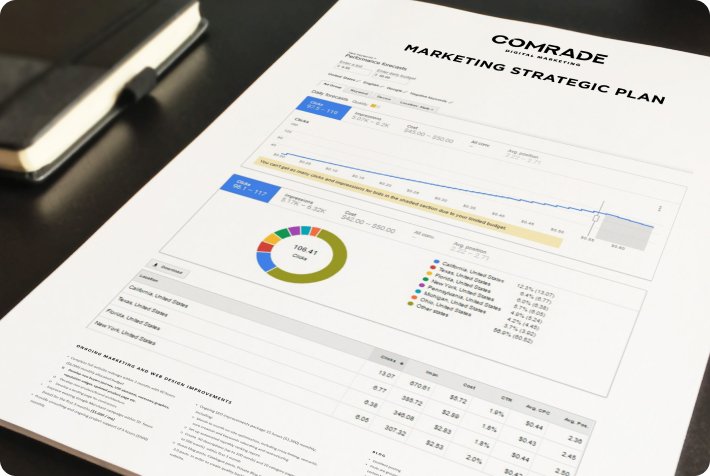Eight out of every 10 video search results are YouTube videos. While TikTok is hot on its heels in terms of popularity, YouTube has a broader reach, with more than 95% of the internet population using it.
Its user-friendliness, combined with the soaring demand for video content, has made it the second-largest search engine after Google. With 3 billion searches per month, YouTube’s search volume is larger than that of Bing, Yahoo, AOL, and Ask.com combined.
While YouTube seems like an odd eCommerce marketing platform, it has the entertaining attributes of social media with an immense volume of online search traffic, as well as indexing by Google bots that, when combined, augment search engine rankings.
In this blog, we’ll outline everything you need to know to be successful on this booming video platform.
The Importance of YouTube for Ecommerce
This year, YouTube’s worldwide advertising revenue came to $6.9 billion in the first quarter, representing a 14% increase from 2021.
YouTube has 2 billion logged-in monthly users, and 81% of 15-25-year-olds in the US consistently use it. It’s the second most preferred way for 18-34 year-olds to consume videos and can produce profitable results even with a less-than-ideal marketing budget.
If you’re curious how it stacks up on mobile, just know more than 70% of video views come from mobile devices, and marketers who tap into video grow revenue 49% faster than those who don’t.
Videos have the highest click-through rate among existing ad formats. Its common knowledge users prefer learning about new products via video rather than text.
So, if the number one challenge marketers face is lead generation, and 43% of consumers want to see more content, then YouTube marketing is the perfect solution.
YouTube for eCommerce improves organic rankings in search engines, humanizes brands, and offers fantastic exposure. Developing an SEO content marketing strategy for the platform should be an integral part of your company’s digital marketing strategy to drive sales.
How to Market Products on YouTube
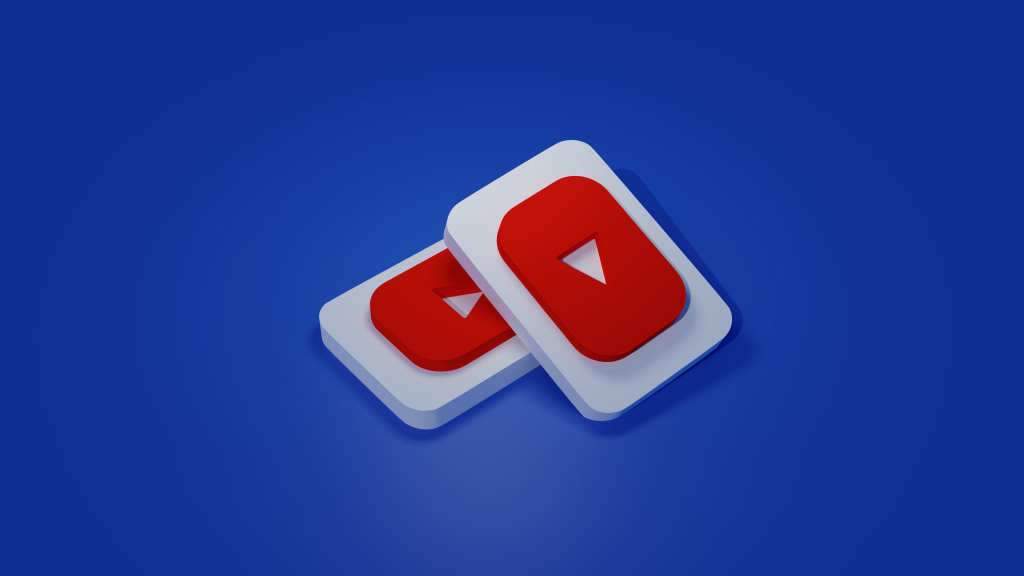
Virtually every type of business will benefit from YouTube Marketing, including freelancers and consultants.
We’ll walk you through each step of YouTube marketing—from the research phase to optimizing your channel.
You can use the following process to build your YouTube strategy from the ground up:
- Analyze your competitors on YouTube
- Take stock of your resources
- Develop a YouTube content plan
- Create and Optimize your YouTube channel
- Upload your first video
Let’s escort through some key aspects of the above processes.
1. Analyze Your Competitors on YouTube

Watching how similar brands harness their power on YouTube inspires ideas and provides a glimpse into what your audience likes.
Your competitors reveal a lot about potential content creation strategies. There are many types of video content you can upload to YouTube: product reviews, Q&A videos, giveaways, vlogs, etc.
If you’re a lawyer, and the most-viewed videos for competing firms are explainer videos, then they’re likely to work for you too. Mimicking strategies already proven to be successful can save you time and money.
You should also track competitors’ metrics such as the number of subscribers, highest-performing videos, engagement rates, likes, dislikes, and the number of views per video to gauge where their brands stand.
Being mindful of how often they post new, original content is also useful. Content marketing hinges on consistency. Therefore, if you know most competitors publish new videos once a week, you can expect to do the same. This gives you a good benchmark of how your production schedule and content plan might look.
Brands aren’t perfect so take heed of what others aren’t doing or where they’re falling short. Small details like poor captions or not utilizing keywords can have a massive impact on views and engagement rates.
2. Take Stock of Your Resources
If you’re new to producing YouTube content, it would do you good to watch a few videos on production best practices. Anyone can film something on their phone, but good lighting and decent sound ensure quality production.
Presentation matters: publishing videos of poor quality can hurt your brand!
To create YouTube content, you’ll need the following equipment:
- Camera
- Microphone
- Tripod
- Lighting
- Video editing software
You don’t necessarily have to invest in state-of-the-art cameras, but you should try to achieve as high a production value as possible.
Other resources to consider include time. Will you be shooting these videos yourself? Do they require other team members? Where will you shoot them? As in, do you have a dedicated space, or do you need to factor in time to shift things around the office?
There are so many hacks to make your videos look good, from buying retractable backdrops to filming facing a window to capture the best light. They just require consideration and adequate resource management.
So, if you are going to invest in video marketing, you don’t need the most expensive equipment, but you do need to get the basics right. Due to the time and effort warranted, it doesn’t make sense to do a half-baked job.
3. Develop a Content Plan
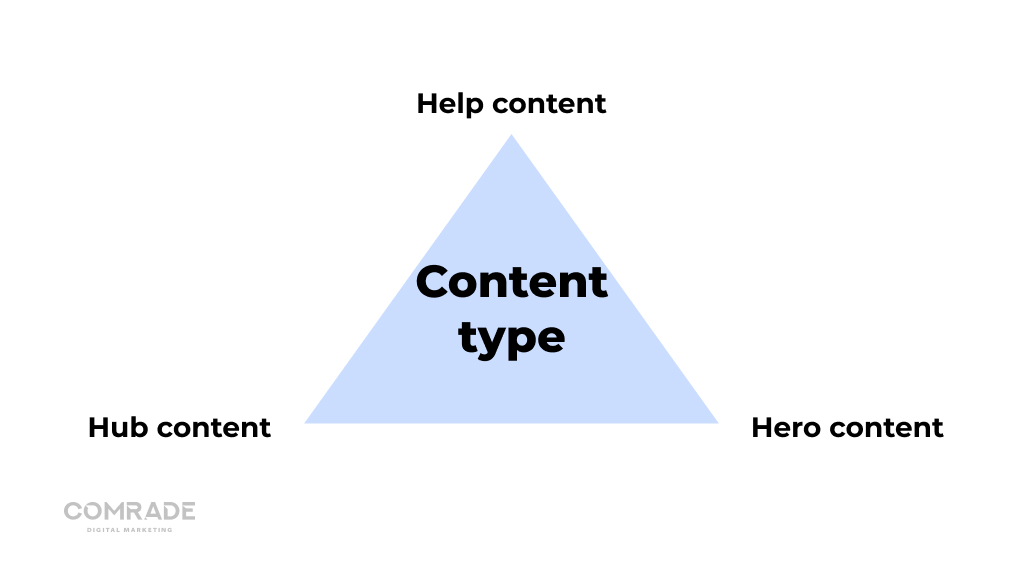
The videos you create for YouTube should increase product awareness while simultaneously convincing customers your product is superior to competitors.
Google has a handy playbook to help determine the particulars around content planning. Content marketing must add value, and there are three ways you can do this:
- Inspire the audience with relatable and emotive stories.
- Educate the audience with useful information.
- Entertain the audience through comedic, surprising, or unique content with high production value. Not all brands need to use humor. What’s important is you engage with your audience in a tone that reflects your brand.
Then, when it comes to content type, there are numerous options:
- Help content: Think about what your audience actively searches for online. How-to-videos are very popular in this category, as well as product tutorials and FAQ videos.
- Hub content: This is a curated collection of branded video content on a specific topic or subject. It takes a deep dive into a specific area in which your business is an authority or expert. An example is nighttime skincare routine tutorials. Online stores and businesses will stagger this throughout the year.
- Hero content: These YouTube videos are designed to appeal to a mass audience, i.e., expose as many potential customers to your products or services as possible. Brands usually strategize a few hero content moments per year. For an online store, this might signal an influencer collaboration or a YouTube live stream event.
How to Decide Which YouTube Videos to Produce
The key to producing quality content is understanding what problems your audience faces and creating content that offers solutions. Remember, YouTube video marketing doesn’t work in a silo—it’s part of your overall content marketing strategy, so naturally, this will inform the type of YouTube content you create.
Announcement Videos

This type of video updates consumers about new products, special events, upcoming sales, or company milestones. As a hype-generating tool, it’s effective at creating a buzz. Take a look at the iPhone 13 product announcement video, for example. (You can generate even more hype by teasing audiences with a release date.)
How-to Videos

According to Google, How-to-videos earn the most attention of any content category on YouTube, even more than music or gaming videos.
In essence, YouTube is a visual search engine that helps consumers understand how best to utilize a product. The platform is as much an educational resource as it is an entertaining one.
To make great how-to videos, you have to understand your product and your audience’s issues. Is your product easy or difficult to use or use? Are there multiple steps involved in assembling or setting up items that require a tutorial for clarity?
For example, Dyson may have different how-to videos for each version of their vacuums.
Keep in mind that the goal of how-to videos is to educate your audience. While it may not directly drive sales, it’s used as a tool to capture attention and move viewers along the sales funnel. By watching a video for one product, they may stumble upon one for another they’re keen to purchase.
How-to videos also offer the opportunity to inconspicuously show off your products or services and emphasize the small details that set you apart from your competition.
If you’re struggling to figure out what to create, read common blog posts in your niche. Even searching queries related to your niche that start with “how to” can be helpful.
Don’t shy away from these types of videos. 83% of respondents prefer watching videos to access instructional information. It’s one of the easiest ways to cultivate an engaged audience, especially for eCommerce businesses that need to gain a footing in the market.
List Videos

Lists come in many forms, including helpful videos. Coming up with different ways to use your product, answering frequently asked questions, or providing reasons why your audience should purchase your product breathes life into list-based content.
Listicle videos are the most popular form of visual content for social media platforms because they are easy to remember and share. They increase engagement and help boost traffic.
Product Videos

A product video effectively demonstrates the benefit of a product, focussing on its key features and how they relieve customer pain points. The aim is to sell products. So be sure to include a clear call to action.
This type of video also imparts important product information and sometimes demonstrates how the product is used in daily life.
Comparison Videos

Comparing multiple products in the same video (if you have a product line) or to similar ones made by your competition helps emphasize your products’ unique selling points. Note: you want to avoid harping on too much about your competitors or completely slating theirs.
The idea is just to be as objective as possible while showcasing your products in the best light.
Behind-the-Scene Videos

These videos give your target audience a sneak peek of what goes on behind closed doors. Staff interviews, showing off your workspace, or sharing your brand story offer opportunities to humanize your online business.
Additionally, educating your target audience on the length and depth of the work involved in creating your products and services allows for a deeper understanding and appreciation for what your business does.
Giveaway Videos

Most people love receiving free things, so why not do giveaways with influencers who embody your brand and have a strong following?
You can also give away products directly on your channel. Just make sure to set the right parameters for your giveaway, so they maximize subscriber attention. For example, customers are only eligible to win if they subscribe to your YouTube channel.
This YouTube marketing strategy grows your online following and increases YouTube channel engagement.
User Experience Videos

As reported by Adweek, 85% of people say user-generated content (UGC) is more influential than content made directly by brands.
This is likely because it works the same way as word-of-mouth (social proof), and there’s visual evidence to back up user claims.
These types of videos help you weave products into the daily routines of viewers and let them envision their life with them. Skin-product tutorials or reviews are common examples in this category.
Those who love your brand will always advocate for it. So, why not get them on board to market it?
Moreover, as your YouTube viewers increase, you’ll notice they’ll start tagging you in their videos and comments.
For example, if you run an eCommerce store that sells winter gear, you may see hikers in Colorado tagging you in content that they produce when wearing your brand. Take advantage of this free marketing and capitalize on it by turning your brand loyalists into digestible YouTube videos.
Make sure to communicate with the individual or group who originally made the video and get their permission to share their content. You can also ask if they are willing to create further content for your brand for a cost.
Lean into these tactics to maximize views on viewer-generated brand videos.
You can also invest in influencer marketing, which we’ll get to in a bit.
Unboxing Videos
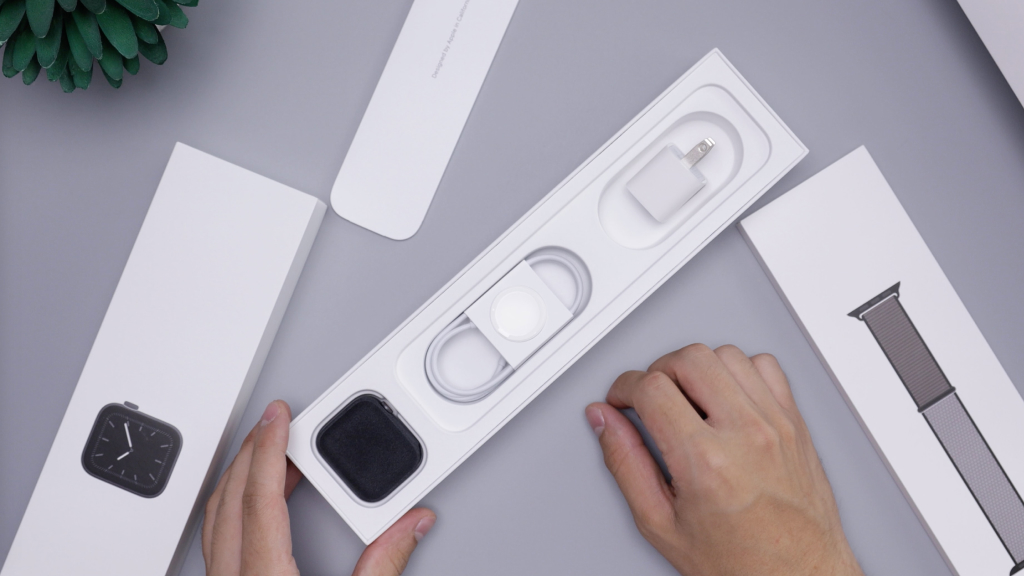
Unboxing videos are precisely what they sound like. They’re videos of someone opening a package. Consumers love unboxing videos for their real-time, moment-by-moment candid feel.
If you find a passionate fan of your brand, and they happen to also create positive videos about your products, don’t hesitate to collaborate with them.
Think of unboxing videos as visual brand testimonials indirectly explaining how your products are unique and different.
Make sure your unboxing videos feature your product in action. Viewers want to see how and when to use your product through videos because they’re watching the video as a learning tool in their purchasing decision.
For instance, if your eCommerce store sells dog collars, you may publish an unboxing video made by a passionate dog lover and their furry friend featuring a new, limited design.
4. Create and Optimize Your YouTube Channel
Hootsuite has an excellent step-by-step guide on how to set up YouTube Channels. As experts on YouTube for eCommerce, we’ll focus more on the optimization side of things. So, once you have an idea of the kind of video marketing content you’re going to create, you’ll need to look at optimization.
Use Keywords in Video Titles and Descriptions

Video titles are important for Google searches. Hence, your keyword selection is NB in getting ranked. Therefore, your video title should include keywords that will help you rank on Google. You can produce a great video, but if it’s not optimized with keywords, it may not attract the number of views you are expecting.
Always make sure your target keywords fit naturally into your video titles and hint at what your audience can expect when watching. Conducting keyword research will alert you to what phrases and words your target audience uses most when searching online.
For individual videos, we recommend targeting long-tail keywords, which are more specific. For example, “How to file for a personal injury claim” is a specific keyword phrase that will work better than “personal injury claim” if you’re a law firm creating legal-themed videos.
Additionally, YouTube video descriptions are also important and should have keywords too. Descriptions should always be at least 250 words. This is critical for your YouTube SEO strategy.
Videos with optimized descriptions tend to show up on the platform’s suggested sidebar, which is a significant source of views for most channels. Descriptions are also smart places to add website links, and any other channels you want to drive traffic to.
To summarize: Targeted keywords should appear in titles, descriptions, tags, and transcripts.
Create Clickable Video Thumbnails

Since your video’s click-through rate is an important ranking factor in YouTube’s algorithm, especially during its first hour on the platform, an eye-catching thumbnail can make or break your video’s success.
Vibrant thumbnails that instantly grab your target audience’s attention will differentiate you from your competition. If you don’t have a brand kit, you should get one developed.
Usually created for companies by digital marketing agencies, brand kits are visual identity guides containing logos, colors, fonts, and messaging unique to your business’ brand.
When you create videos, their fonts and general look and feel should emulate your eCommerce business’ brand identity.
Then, as far as practicalities are concerned, the ideal YouTube thumbnail size is 1280 × 720 pixels, with an aspect ratio of 16:9. Therefore, make sure your thumbnail size is a minimum of 640 pixels wide, and under 2 MB.
Utilize YouTube Cards
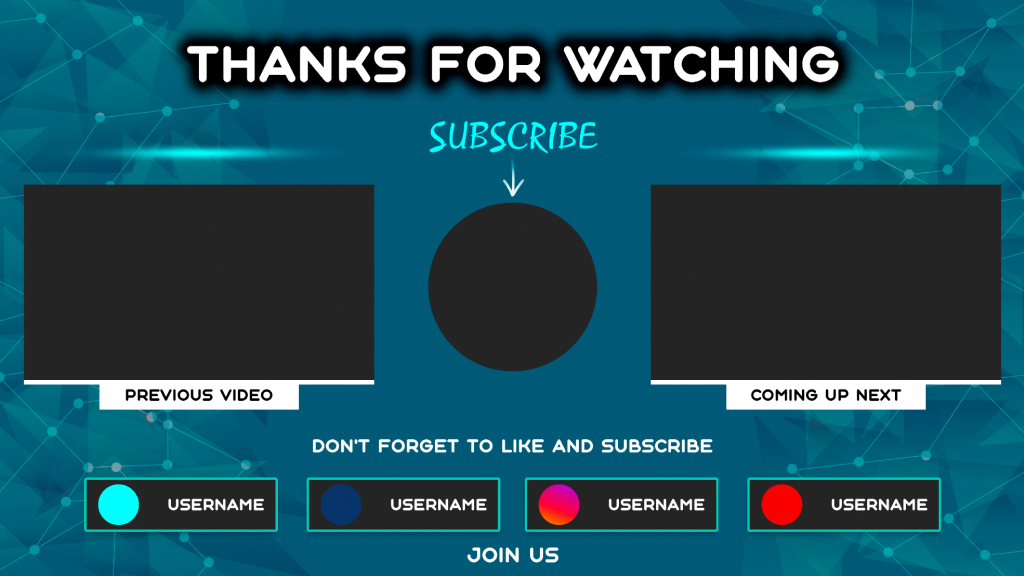
These are interactive cards that appear at the end of a YouTube video that allows creators to share clickable links to relevant content. You can add up to five cards to each video and use them in Trueview Ad Campaign videos.
Using cards is an excellent way to complement your video’s content and enhance viewer experience with contextually relevant information. They also encourage viewers to engage with your other videos and take meaningful actions as a result.
Create Playlists
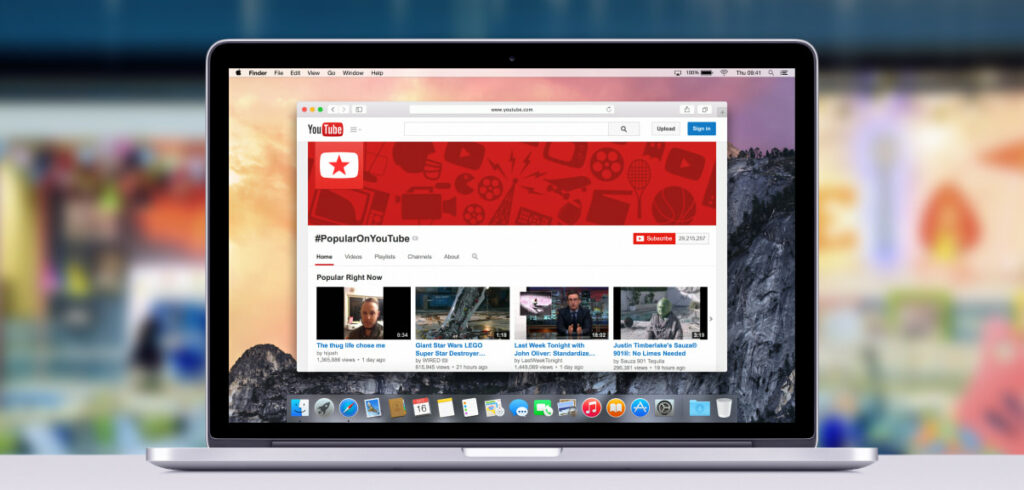
Creating playlists is a great way to get people to watch more videos. This is because as soon as one video ends, the next starts playing.
Playlists also facilitate discoverability as they’re more likely to appear in YouTube’s Suggested Videos column. Plus, they’re excellent places to include more keywords.
There are two different ways to create playlists:
- On your channel page, you can group existing videos together under a common theme, which keeps viewers on your channel and not your competitor’s YouTube channels.
- You can collect videos from other relevant influences.
The Cut’s “Lineup” playlist is a good example, as is Vogue’s and the School of Life’s.
Include Calls to Action
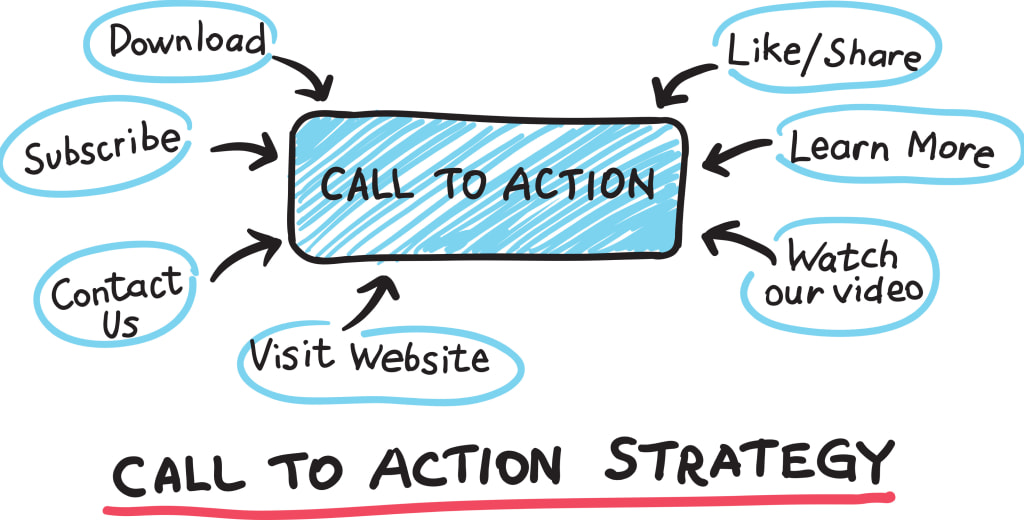
A call to action (CTA) is a marketing term or any design that prompts an immediate response or encourages an immediate sale. You’ve probably come across countless YouTube videos where the hosts ask viewers to subscribe at the end of their videos. These are calls to action.
Whatever your CTAs are, they should always be clear, compelling, and urgent. While YouTube has a call to action extension for in-stream YouTube ads, there are plenty of free ways to add them to your videos, such as direct host mentions, in your video descriptions, and via end cards.
How to Promote Your Brand on YouTube: Paid vs. Organic Content
Like all forms of digital marketing, there are two facets; organic videos and paid for video ads. The difference is organic YouTube content is posted for free, whereas with paid ads, you pay to have them reach a larger audience.
Ideally, you should be using a combination of both in your YouTube Marketing strategies.
Brand History Videos
Brand history videos fall into the evergreen content category. Done well, they can live on your YouTube channel for years, serving both as commercial (paid for) and inbound marketing content.
We encourage you to take the time to create brand-centric videos that share how your company was born and developed to where it is today. These highly personalized videos are an important tactic used to sell your products, services, and brand.
Essentially, they’re PR videos. For consumers on the fence about whether to make a purchase, brand videos can help push them over the edge and convert them, not to mention improving brand awareness in general.
YouTube Advertising: Paid Ads

In addition to creating your own videos, YouTube offer paid ads. These come in a variety of formats, including banner-type ads and video ads. They can show up at the beginning, middle, and end of a video.
According to Google, YouTube mobile ads are 84% more likely to receive viewers’ attention than TV advertising!
Benefits of YouTube Ads
Besides having enormous reach, there are two major advantages to implementing a YouTube advertising campaign. Firstly, if you’re familiar with pay-per-click advertising, you’ll know YouTube ads are cost-effective because they operate the same way.
You only pay when someone clicks on your video ads. Not only that, but it’s entirely up to you to decide how much you spend. Influencer Marketing Hub estimates a YouTube ad can cost anywhere between $0.03—$0.30 per view, with a $2,000 average cost to reach 100,000 views.
A view is counted when a user watches 30 seconds of your video or interacts with it by clicking on it. If a video is shorter than 30 seconds, then it’s only considered a view if a user watches the entire video.
The exact cost for running YouTube ads is influenced by targeting, bidding, and ad formats.
Secondly, the platform’s granular targeting capabilities allow you to get extremely detailed when it comes to reaching your ideal audience.
With YouTube’s targeting options, you can target an ultra-specific group of users, or more general groups based on what products you are trying to sell, including: demographics, topics, customer matches, similar audiences, affinity audiences, in-market audiences, and life events.
This careful targeting and pay-per-view advertising model mean you won’t ever have to overspend or waste money on YouTube ads because if you’ve done your market research correctly, they should always produce results.
Types of YouTube Ads
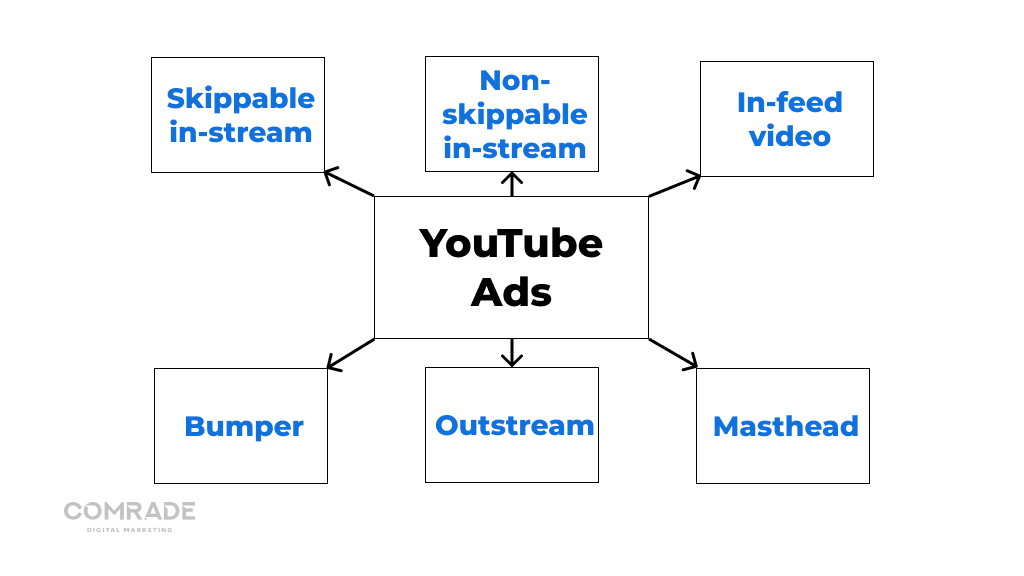
Within Google Ads, you can create several YouTube ad formats to engage potential customers. These can appear on YouTube and across websites and apps running on Google video partners:
- Skippable in-stream ads play before, during, or after content and can be skipped after five seconds.
- Non-skippable in-stream ads play before, during, or after content and cannot be skipped.
- In-feed video ads are advertisements that promote YouTube channel videos on the results page or as recommended related videos.
- Bumper ads are short, non-skippable ads under six seconds that allow you to reach more customers.
- Outstream ads are mobile-only ads that run across a variety of different mobile placements, and typically appear on banners.
- Masthead ads appear on the front page of YouTube and are best for online retailers with substantial marketing budgets.
Generally, in-stream ads are more challenging to execute because you have to immediately attract the attention of your audience before they skip the ad. Once the ad plays for 5 seconds, the viewer can just skip it.
The best tactic for these types of YouTube ads is to include a hook that makes viewers curious. They’re ideally used to show off your unique selling point with a memorable message in a short amount of time to make your product stand out.
Influencer Marketing Strategies and Sponsorships
To a large extent, influencer marketing drives YouTube. It’s not entirely new either. Celebrity endorsements have long been used to sell services and products. The difference is that while you do get celebrity influencers, most are everyday people who create their own content and interact with their audiences in authentic ways.
Because they have their own audiences, they help expand brand reach and build real connections that influence consumers. If you’re a small business, using influencers can serve as a launchpad for your brand.
YouTube is a relatively mature platform, in the sense that it’s been around for some time. Unlike TikTok, which has its place, YouTube provides creators with the most flexibility in terms of video length and style.
Below are different video marketing campaigns you can run with influencers:
- Brand awareness campaigns
- Product unboxing and reviews
- Sponsored videos
- Product placement
- How-to / tutorial videos
- Day-in-life vlogs
- Contest/ giveaways
- Behind-the-scenes
- YouTube Live events
Of course, you need to develop a clear strategy. Most influencer marketing campaigns have one goal in mind. This might be to increase subscriptions or boost awareness or launch a new product.
If you’re serious about influencer marketing, then do your due diligence. Make sure you hire the right ones and have clear goals, so expectations are met.
Here is a list of top influencer marketing agencies to help you find your marketing match. There is a range of influencers out there to suit your budget and brand.
Using YouTube Within Your Overall Marketing Strategy
Videos are a powerful marketing tool, but they’re only one part of your overall digital marketing strategy. Given their easy-to-share nature, there’s no reason why you shouldn’t integrate them into other marketing touchpoints to draw attention to your channel and advertise your brand.
Boost SEO

Optimized videos are a helpful SEO asset.
It works the same way as on-page SEO for website pages, blog content, and landing pages. When you optimize your YouTube videos for SEO, you’re creating more opportunities for your eCommerce business to rank higher online.
When embedded on your website, video content helps with two critical SEO metrics; the time users spend on your web page and the number of backlinks that refer to your domain. YouTube’s videos almost always improve these metrics.
Studies indicate people spend twice as long on a page with a video than without. So, the higher the quality of your content, the more likely you are to get backlinks, especially if it’s helpful!
As you can see, YouTube marketing videos benefit SEO directly and indirectly, influencing SEO and other factors part of Google’s complex and unique ranking system.
Considering the growing popularity of video content, and Google’s prioritization of it, it makes sense that marketers and businesses strategically invest in YouTube channels.
Distribute Videos on Social Media

Consumers love engaging with videos on their social media feeds, so make sure to capitalize on this trend.
Depending on the length of the video, you may want to consider only showing a 30-second to 60-second clip to engage your audience. The chances of your audience watching a full 15-minute video on their newsfeeds are slim. So, it’s best to redirect their attention to your YouTube channel, where they can view the full version.
YouTube also rewards channels that bring in additional traffic from external platforms, i.e., other websites and social media, which results in higher channel authority.
Creating videos requires a fair amount of effort, so it would be a shame not to distribute them as widely as possible. In a highly competitive online environment, you want to be visible everywhere.
Don’t Forget About Landing Pages
Occasionally, a YouTube video just does a better job at advertising how great your product or service is. Video works effectively if you want to grab the attention of new visitors who just landed on your page, explain how your product works, or describe key features.
Just make sure the video embedded into your landing page suits the page’s strategic goals. If the landing page is about signing up for a newsletter to get details on a product launch, the video would need to showcase the product.
Landing pages with videos have an 86% higher conversion rate! So, imagine what you could do if you created a 30-second video and incorporated it into your landing pages?
Supplement Blog Posts

Just because blogs are primarily associated with text does not mean you can’t include your videos as well! Embedding videos in your blog posts helps diversify your content offering and improves your search engine rankings.
A video can substantiate the ideas present in your article, or be the blog post’s main attraction. For example, consider explaining a DIY concept.
In some cases, words alone are not enough, and the process is more accurately understood and demonstrated via video. Just remember to keep your videos visual. There’s no point in having a presenter explain a process to the camera, then you might as well just keep it as text.
Improve Email Campaigns
Finally, you can also utilize YouTube content in your eCommerce email marketing campaigns. Here videos can improve your open rate and click-through rates (CTR).
The effectiveness of this tactic has been recognized by HubSpot, whereby a B2B company software company Igloo Software showed off their workplace culture by creating 200 videos in three months for email content and doubled their CTR.
Other benefits include introducing subscribers to your company culture, brand, and products; you name it! Subscribers shuffle through their content relatively quickly, so shorter videos work best.
You should also include hyperlinks to drive traffic to your website and YouTube channel.
What About YouTube Shorts?

YouTube Shorts was first released as a beta in India in 2020 following the country’s ban of TikTok over security issues before it was launched globally in July 2021.
It’s similar to TikTok and Instagram Reels, except it’s exclusive to YouTube. YouTube shorts offer an easy way to connect with new audiences via the Shorts’ camera app.
This feature facilitates the creation of short-form videos creation (up to 60-seconds long). However, it’s not the same as traditional YouTube videos and is still fairly new.
At this stage, we’d recommend you start with creating normal YouTube videos as it’s still too early to accurately predict the success of these shorter-form ones.
It’s likely with the right strategy that YouTube Shorts are worth the time, but this will also depend on your business, industry, and target audience.
For instance, the common stance is consumers don’t like long videos, but YouTube tech reviewers’ videos tend to be between seven and 15 minutes. Length here isn’t as much of a factor because their niche audiences are eager to learn about products, and YouTubers have to go into detail, which takes time.
So, in terms of data and long-term usability, there’s still much to learn about the value of these vertical-only videos. Rest assured, we’re keeping a close eye on YouTube’s latest developments and how they can provide ROI for our clients.

We Understand YouTube for Ecommerce
Running a successful YouTube channel and launching YouTube ads can seem like a handful on top of an already long to-do list that comes with operating a big or small business. Unfortunately, it’s a must for all eCommerce businesses because videos have become integral marketing content that consumers love engaging with.
Therefore, having a YouTube channel ensures your brand is up-to-date with the ever-evolving digital marketing space.
If you’re looking for hands-on, personalized assistance with your eCommerce YouTube strategy, our experts at Comrade, one of the top digital marketing agencies in Chicago, can help. Why not take advantage of our free, no-obligation marketing consultation to get started?
Frequently Asked Questions
Is YouTube good for Ecommerce?
With nine out of 10 consumers wanting to see more videos from brands, YouTube is a powerful platform to build an engaged audience that champions your brand. YouTube video content marketing improves organic positions in search engines, personalizes brands, and gives products excellent exposure.
Can I sell products on YouTube?
While YouTube is not an eCommerce platform, it is a valuable marketing channel that has a direct impact on consumer behavior. Those who watch YouTube ads and videos tend to increase their overall spending and make more online purchases than those who don't. Hence, YouTube is a useful conversion tool that drives traffic, already interested in your products or services, to your website.
Do YouTube Ads work for Ecommerce?
YouTube ads have a high engagement because they are short, crisp, and to the point. They are one of the most cost-effective methods of getting brands and products in front of audiences and delivering a high ROI due to the platform's precise targeting capabilities.
Where can I find your company?
Comrade originates in Chicago, but we worked all around the United States. We can help your business grow and increase revenue whenever you are. We have offices across most major cities in the US. For example, we can offer digital marketing services in Atlanta or Madison. You can even find our internet marketing experts in Baltimore! If you want to know more about our Seattle digital marketing agency or find out how exactly we can help you, contact us via the phone or email.




